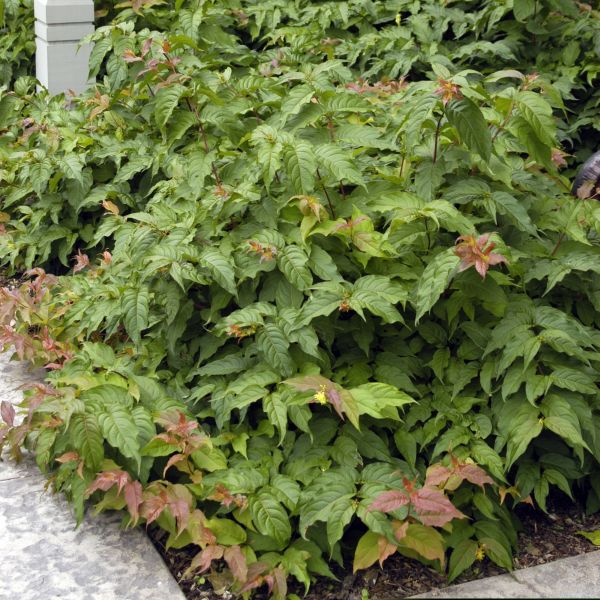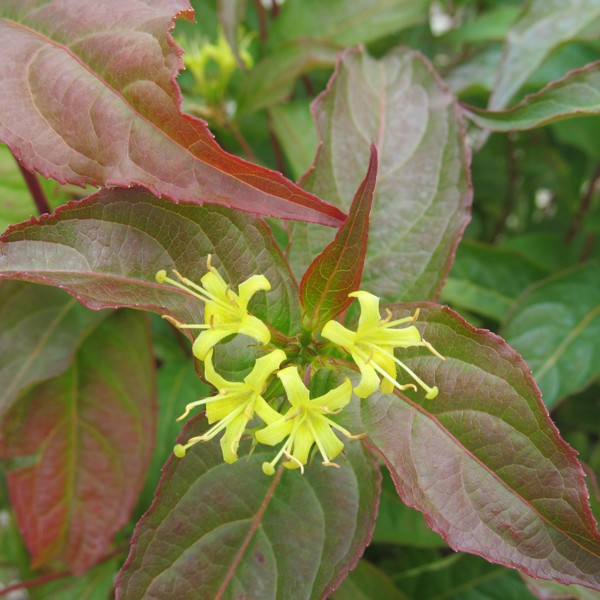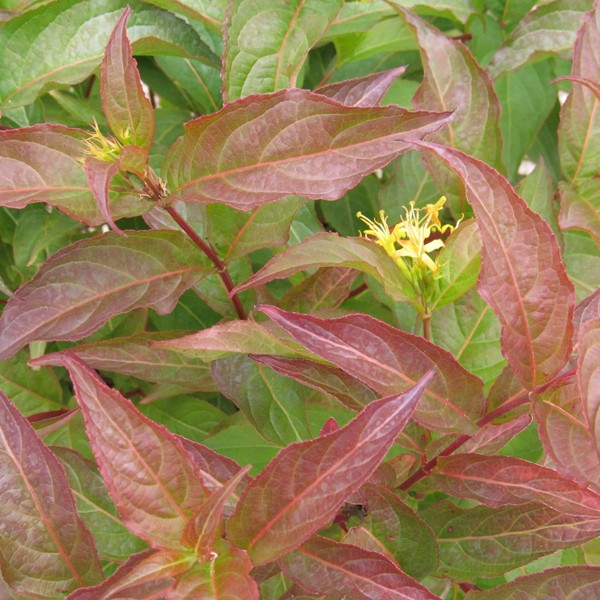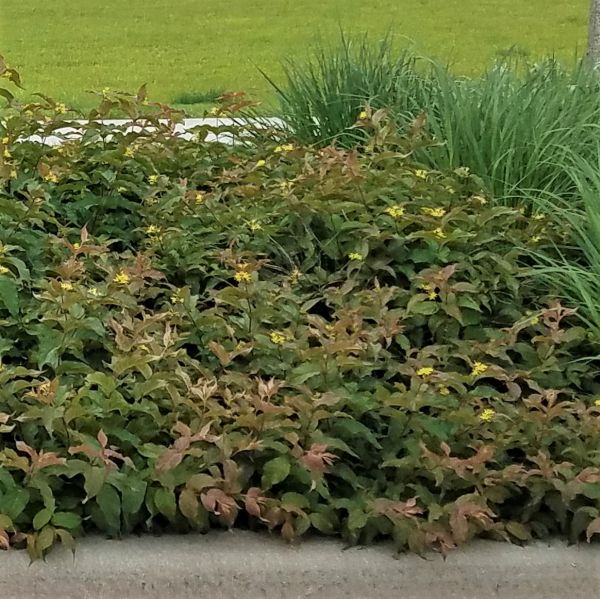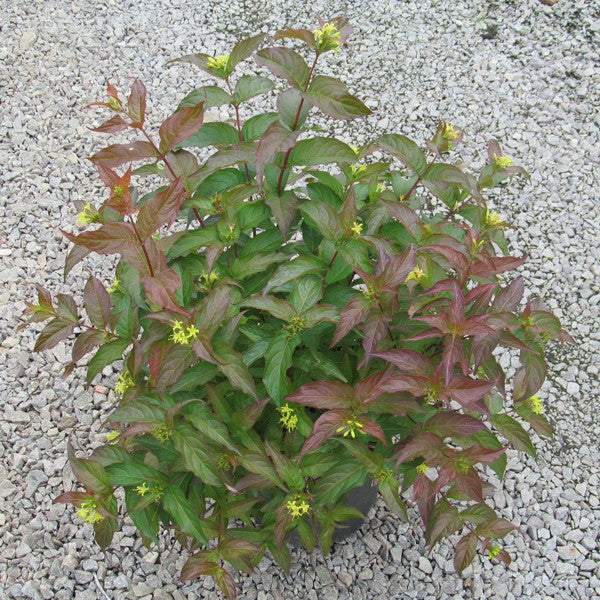Dwarf Bush Honeysuckle
Diervilla lonicera
- Stay Protected with Plant Sentry ™
Dwarf Bush Honeysuckle - #1 Container is backordered and will ship as soon as it is back in stock.
Plant Sentry™
Plant Sentry™

Plant Sentry™ Protected
Your order is protected by our compliance system that:
- Prevents restricted plants from shipping to your state
- Ensures plants meet your state's agricultural requirements
- Protects gardens from invasive pests and diseases
Delivery and Shipping
Delivery and Shipping
Delivery and Shipping
Fast, Safe Plant Delivery
Ships in 3-4 business days • Tracking provided • Weather protected
| Under $50 | $9.99 |
| $50 - $99.99 | $14.99 |
| $100 - $149.99 | $16.99 |
| $150 - $198.99 | $24.99 |
| $199+ | FREE |
✓ Zone-specific timing • ✓ Professional packaging • ✓ Health guarantee
Understanding Plant Options
Nature Hills offers plants in two main formats:
- Container Plants: Grown in pots with soil, sized by container volume and plant age
- Bare Root Plants: Dormant plants without soil, sized by height measurements
Container Plant Sizes
Container sizes indicate plant age and growing capacity rather than liquid volume equivalents. Our containers follow industry-standard nursery "trade gallon" specifications, which differ from standard liquid gallon measurements.
Young Plants (6 months to 18 months old)
| Container Size | Actual Volume | Metric Equivalent |
|---|---|---|
| 2" x 2" x 3" | 0.18 - 0.21 dry quarts | 0.20 - 0.23 dry liters |
| 4" Container | 0.31 - 0.87 dry quarts | 0.35 - 0.96 dry liters |
| 4.5" Container | 0.65 dry quarts | 0.72 dry liters |
| 6" Container | 1.4 dry quarts | 1.59 dry liters |
| 1 Quart | 1 dry quart | 1.1 dry liters |
| 5.5" Container | 1.89 dry quarts | 2.08 dry liters |
Established Plants (18 months to 2.5 years old)
| Container Size | Actual Volume | Metric Equivalent |
|---|---|---|
| 2 Quart | 2 dry quarts | 2.2 dry liters |
| #1 Container | 2.26 - 3.73 dry quarts | 2.49 - 4.11 dry liters |
| 5" x 5" x 12" | 3.5 - 4.3 dry quarts | 3.85 - 4.74 dry liters |
Mature Plants (2-4 years old)
| Container Size | Actual Volume | Metric Equivalent |
|---|---|---|
| #2 Container | 1.19 - 1.76 dry gallons | 5.24 - 7.75 dry liters |
| #3 Container | 2.15 - 2.76 dry gallons | 8.14 - 12.16 dry liters |
Large Plants (3-5 years old)
| Container Size | Actual Volume | Metric Equivalent |
|---|---|---|
| #5 Container | 2.92 - 4.62 dry gallons | 12.86 - 20.35 dry liters |
| #6 Container | 5.25 - 6.01 dry gallons | 23.12 - 26.42 dry liters |
| #7 Container | 5.98 - 6.53 dry gallons | 26.34 - 28.76 dry liters |
Bare Root Plants
Bare root plants are sold by height from the root system to the top of the plant. Plants may exceed minimum height requirements.
Common Sizes:
- Trees: 1 foot, 2 feet, 3 feet, 4 feet, 5 feet, 6 feet
- Shrubs & Perennials: 1 foot, 18 inches, 2 feet
Important Notes
Container Volume Specifications
- Trade Gallon Standard: Our containers follow industry-standard "trade gallon" specifications established by the American National Standards Institute (ANSI Z60.1) for nursery stock
- Volume Variations: Actual soil volume may vary due to plant root systems and growing medium settlement
- Age Indicators: Container size primarily indicates plant age and maturity rather than liquid volume equivalents
Growing Conditions
- Plant size can vary based on variety and growing conditions
- Container size helps indicate plant maturity and establishment level
- Larger containers generally mean more established root systems and faster landscape establishment
Seasonal Availability
- Bare root plants are available seasonally when dormant
- Container plants are available throughout the growing season
- Specific varieties may have limited availability in certain sizes
Questions?
For questions about specific plant sizes or availability, please contact our plant experts who can help you choose the right size for your landscape needs.
Plant Highlights
Dwarf Bush Honeysuckle highlights at a glance!
-
Botanical Name
-
Brand
-
Growing Zones3, 4, 5, 6, 7
-
Growth RateFast
-
Mature Height
-
Mature Width
-
Leaf Color
-
Flower Color
-
Fall Color
-
Pollinator FriendlyYes
-
Pollinator Required
-
Bloom PeriodEarly Summer, Late Summer
-
FragrantYes
Characteristics
Where To Plant
When To Prune
- Early Spring
Water & Moisture Needs
- Moderate
Sunlight Needs
Soil Needs
- Widely Adaptable
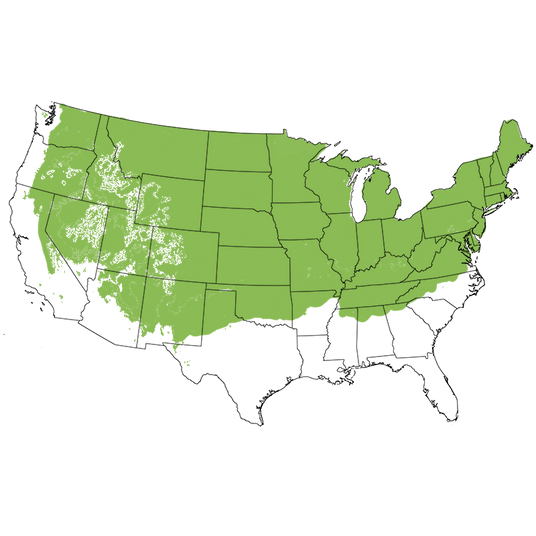
Growing Zones
Do you have a steep hill on your property, or a hot, dry area, or even a marshy low spot you don't know what to do with? Try this native groundcover shrub with a bounty of eye-catching yellow summer blooms! Native to the United States, the Dwarf Bush Honeysuckle (Diervilla lonicera) is a small deciduous flowering native shrub with a wealth of ornamental features and a carefree attitude!
There are few things more delightful than a flowering shrub in the yard. Dwarf Bush Honeysuckle is a vigorous, fast-growing shrub. It's small and has a spreading nature. And although this plant is not really a Honeysuckle, the pretty yellow flowers do resemble those in the Honeysuckle Vine family.
The tubular-shaped flowers are simply irresistible to many creatures, and these early summer flowers are produced in June and July on new growth. You'll feel the same way once you experience their exotic beauty and wonderful sweet scent. Butterflies, birds and honeybees all love it. Hummingbirds will soon consider your yard their favorite place in the neighborhood!
Bronze-tipped, green foliage is perfect for the yellow flowers. You'll also love the sweet scent they send drifting on the afternoon breezes in summer. Fall color turns a nice shade of reddish burgundy many years. The bark is exfoliating, revealing an inner orange hue that is lovely in the winter. Red berries may appear if you have another Honeysuckle for it to pollinate with, much to your songbird's delight!
Dwarf Bush Honeysuckle has several nicknames. Perhaps you know this native charmer as Low Bush Honeysuckle or Northern Bush Honeysuckle. You could be forgiven if you called it a Garden Workhorse. Cold-hardy down to bitter USDA growing zone 3 through 7 winters, these are adaptable in the sun, partial sun or shade, it laughs at dry, rocky soil, some salty locations, and well-draining clay, and can handle wet feet, too! Deer, pests and diseases are almost non-existent issues for this incredible shrub!
Planting and Application:
Use this tough little shrub as groundcover to prevent soil erosion! It works like a true champ to hold soil in place. After all, it has the most amazing soil-holding capability. It will spread out slowly in all directions and fill in open ground beautifully for you.
Use Dwarf Bush Honeysuckle as a phenomenal, groundcover shrub on steep embankments. And wouldn't it be far nicer to have a flowering shrub to look at, rather than turf on steep slopes? Stop giving yourself a white-knuckle mowing task and use Dwarf Bush Honeysuckle instead.
Or, plant a row of them to create informal, low hedges that feature great bronzy foliage and yellow flowers in summer. Honeysuckles are great edging and facer shrubs too! Please remember that this is a free-form, informal plant. If you are looking for formal hedges, try Privet or Boxwood.
Try it in tough places where grass won't grow. How about that space between the sidewalk and the garage with the great capacity to fill the area with literally no upkeep? How about those areas beneath deck areas with sun or shade and not fussy about soil? Dwarf Bush Honeysuckle is the perfect response to tough problems in the landscape.
It performs beautifully in urban and commercial landscapes, too. Commercial use includes roadside plantings and parking lots. Use in the hot, dry 'hell strip' zone between the road and the sidewalk to give four seasons of interest.
Mass plantings and rows of these workhorses require almost no care and have no disease or insect problems. To create a mass planting, use a zig-zag planting pattern. When you group them together en masse, you'll magnify the visual impact of this beautiful compact shrub! For a fast, solid screen, plant them 2 feet apart on center, measuring from the center of one plant to the center of the next. Increase the spread to 3 - 5 feet for a more informal look.
One would look great as a specimen planting or accent shrub because of the fantastic foliage color and yellow blooms! Scatter several around your yard to support beneficial insects in a Native plant installation and support Butterflies as a caterpillar Host Plant. Bird and butterfly gardens, Rock gardens and Rain gardens, or just a pretty backdrop to the Perennial border, you name it - this shrub fits right in!
The same spreading root system and (polite) suckering capabilities of this shrub mean instant wildlife shelters and thickets for birds to nest and roost in! Birds love the berries if you have multiple shrubs to pollinate the flowers.
Give Dwarf Bush Honeysuckle room to develop and grow in all directions for the best effect. All in all, the Dwarf Bush Honeysuckle is an extraordinary ornamental shrub that offers a lot for the small amount of space it requires. It is a unique plant that is so widely adaptable and so versatile. In fact, we can't think of a single reason why you wouldn't want to use this great little plant!
- Exotic Yellow Summer Flowers - Butterfly Magnet!
- Native Shrub is Not Invasive
- Fast-Growing Vigorous Growth
- Bronzy Green Foliage Turns Purple/Burgundy in Fall
- Hardworking Short Suckering Shrub
- Prevents Soil Erosion
- Safer Than Turf on Hard-To-Mow Slopes
#ProPlantTips for Care:
This versatile plant can grow in full sun, part shade or shade. The more sun, the better, but this adaptable plant might really amaze you! Dwarf Bush Honeysuckle is o adaptable to almost any soil, including wet or dry as long as it is well-drained. It even thrives in rocky, dry soil!
Give young plants a moderate amount of regular water while they get their roots established in your soil. After that, they'll take drought and neglect without missing a beat. In extended drought, please protect your investment with judicious watering.
Keep the new planting weeded and apply a 3-4 inch thick layer of arborist mulch over the fibrous root systems. This not only keeps the roots cool; it also helps unify and polish up the look.
You shouldn't need to Prune it much, but it's nice to know you can complete that task any time of year. But you might want to wait until the flowers are all done showing off first. If your Dwarf Bush Honeysuckle needs to be rejuvenated (usually every 3-5 years) or reminded where the edge of the bed stops - simply mow them all the way down to the ground, or begin a yearly regiment of renewal pruning in early spring. Do this before the new growth appears in spring. Fresh new growth will develop from the roots and even flower in the first season. Trim the edges to tidy the edge of a sidewalk or driveway anytime.
- Handles Full Sun to Full Shade
- Grows in Wet or Dry Soils
- Maintenance Free
- Prune Late Winter/Early Spring - Blooms on New Wood
- Insect & Disease Free - Seldom Severely Damaged by Deer
- Tough Drought Tolerant Plant
This is one of those useful, pretty plant it and forget it plants we all love to use. It's tough enough to handle just about anything you might throw at it. Even brown thumbs can enjoy growing this durable little trouper!
Put Dwarf Bush Honeysuckle to work in your yard. You'll love the dark-green foliage and lovely, yellow flowers of this beauty! Order yours now at NatureHills.com and secure yourself a few of these amazing workhorse flowering ornamental shrubs!

